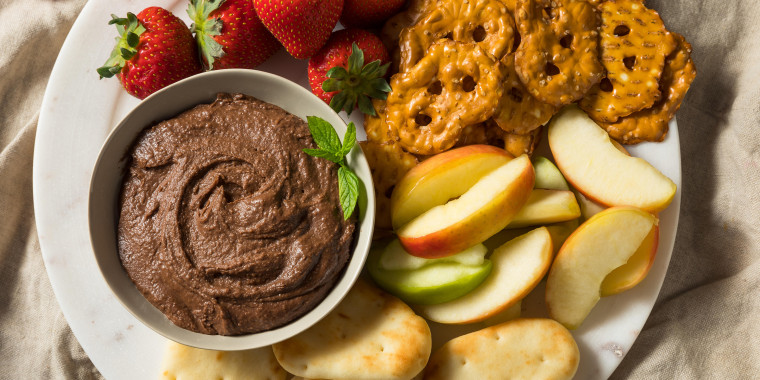Hummus has been popular on U.S. grocery shelves for over 30 years now, but it really seems to be ballooning in the last few years. Almost every deli department has a whole section devoted to several brands of the little tubs in various flavors of increasing creativity: There’s olive, red pepper, sundried tomato, lemon dill, everything bagel, roasted beet, Buffalo ranch, chocolate …
Chocolate? Yes, chocolate. The Highway to Hummus has taken a hard turn onto Dessert Avenue. Seasonal and limited-time offerings have also seen snickerdoodle, cookie dough, cake batter, and apple and pumpkin pie.
The first time I saw the chocolate one, I stood there for a while, just staring and trying to comprehend, the way one does the first time one lays eyes on a Hieronymus Bosch painting. Trumpets blare. Ancient worlds collide. Some joyously pick the forbidden fruit while others wail and grimace. Is this a party, or is this hell?
Hummus is an ancient Middle Eastern food traditionally made with chickpeas, tahini, olive oil, lemon and garlic. Although the flavors proliferating here in the West might seem a little nuts, there’s a long history of adding lots of different toppings depending on the country: pickles, onions, pine nuts, herbs, radishes and so on. Regarding dessert hummus, though, the most important question to answer might be: Is there garlic? There is not. There is a lot of sugar, though — it’s often the second or third ingredient.
It’s not just a passing fad. Cedar’s, Sabra, Boar’s Head and even store brands like Trader Joe’s and Target have given dessert hummus a whirl. There are recipes online, too. A Cedar’s Foods spokesperson told me that although the niche is smaller than for the savory hummus lines, its dark chocolate flavor is popular enough that it is expanding its market starting this month, as well as planning a Whole Foods-exclusive Organic Pumpkin Spice Hummus for September 2022.
So, we’ve established that it is a Thing. But is it dessert? Is it hummus? Let’s get down to the nitty-gritty and sample some.
Boar’s Head Apple Pie Hummus
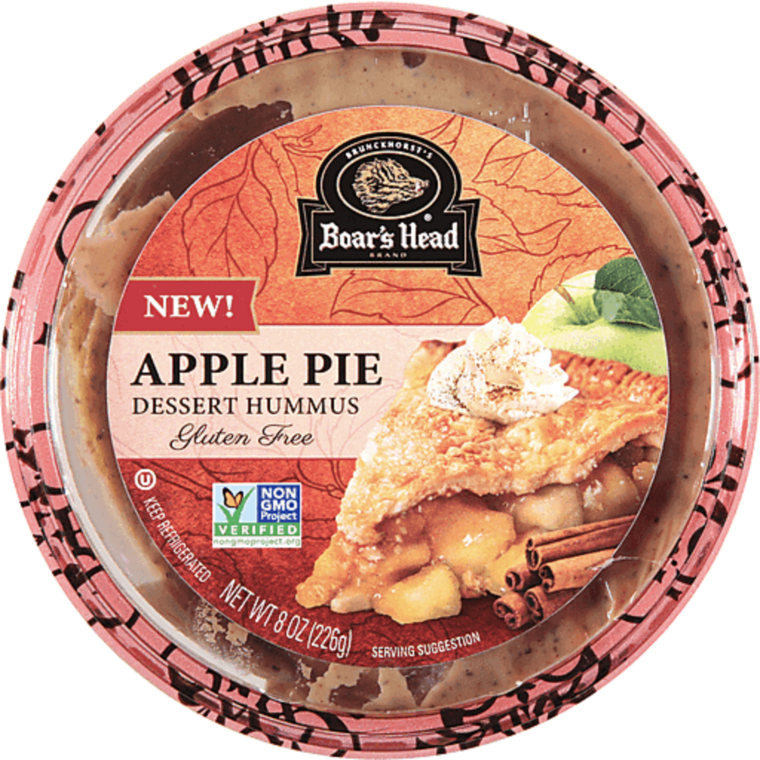
This is a limited-edition products that follows the success of Boar Head's Pumpkin Pie flavor last year. I didn’t expect it to be as good as it is. The apple is a flavor, not a puréed or chopped mix-in. The spices are complex, balanced. It’s not just cinnamon poking you in the eye; there’s nutmeg and vanilla. A lot of flavors of savory hummus have oil as a major ingredient so that the texture is almost emulsified, but this one has a dense texture reminiscent of cooked pumpkin pie filling, and it ends up with just 60 calories per serving.
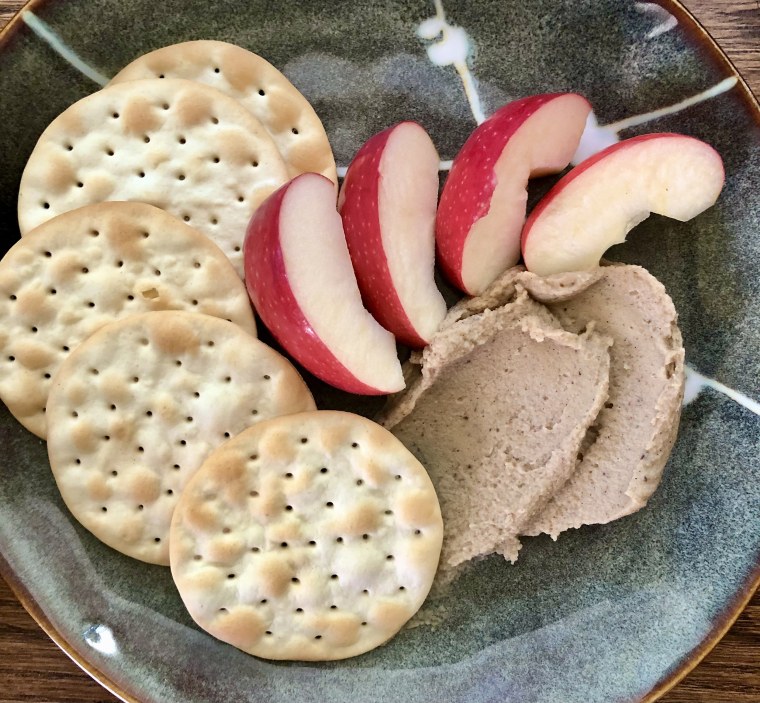
It looks textured in the photo, but it’s not gritty. It enhances rather than competes with apple slices, adding some warmth and depth along with some protein. On flaky water crackers, well, maybe it doesn’t own a hotel on Pie Place, but it’s certainly renting in the neighborhood.
Good & Gather Brownie Batter Dessert Hummus
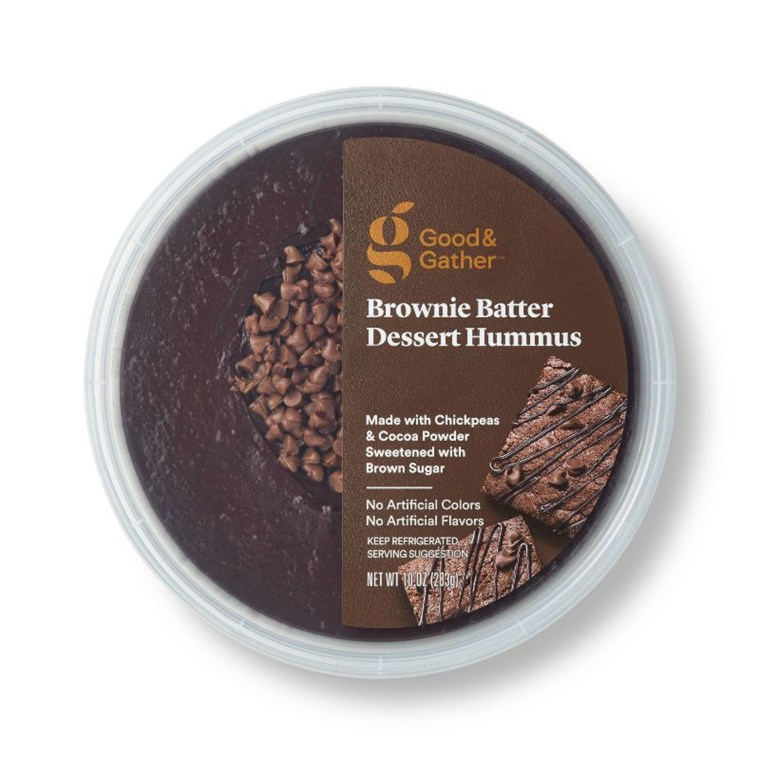
It’s not mainstream if it’s not available at Target! The different brands of chocolate hummus vary in how dark the cocoa is and how much sugar is added. This one by Target’s flagship store brand has date paste added for sweetness. That’s definitely not in the traditional recipes, and it makes the texture almost like chocolate pudding, very spreadable and smooth. It would make a great filling for a layer cake.
The chocolate flavor itself is from the dark side, not bitter but perhaps too much for a lot of kids. For bolder palates, though, it makes a real swoon of a snack with crackers, spread on bread like Nutella, or with this sort of s’mores-y banana thing I put together.
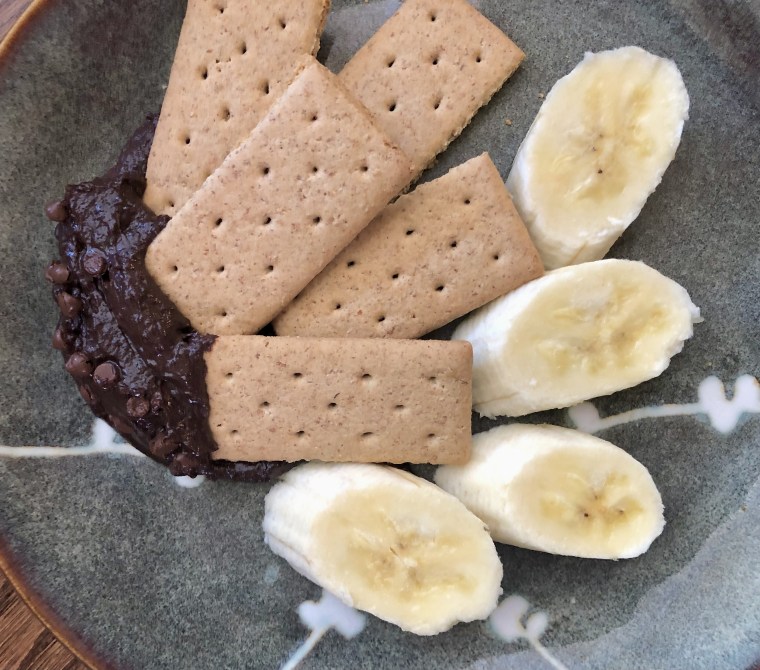
I might see what happens if I mix it with cream cheese or nut butter for a baked-in brownie swirl. I stirred a big spoonful into Chobani’s coffee yogurt this morning and almost cried.
Cedar's Dark Chocolate Hommus
I’ve tried Cedar’s similar Dark Chocolate Hommus, too, and I think I prefer it for daily snack purposes. The calories are the same (80), but without the dates, the texture is denser and less custard-like.
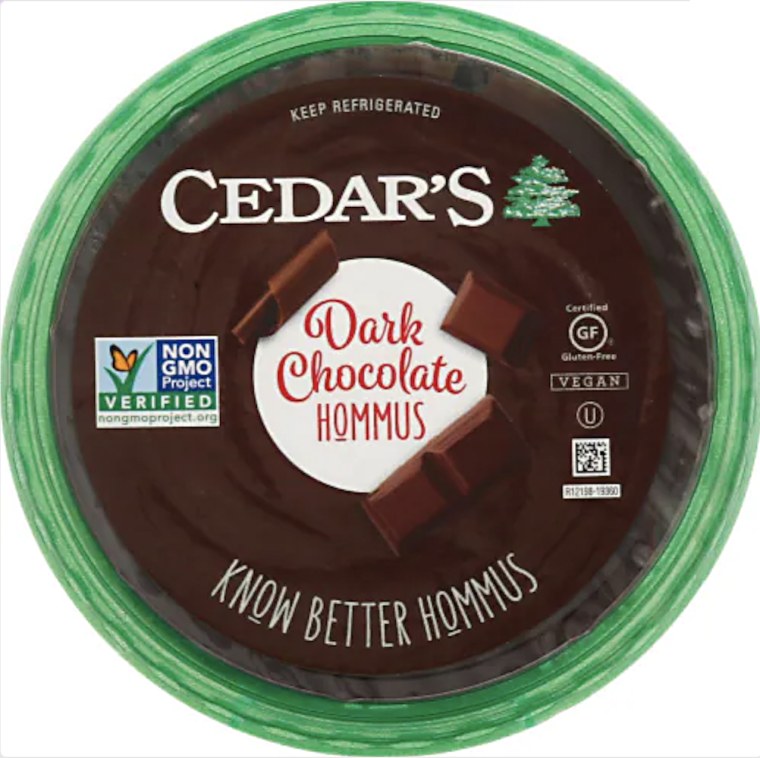
So … it's dessert?
In nutritional terms, don’t kid yourself that dessert hummus is a wonder food. In addition to having added sugars, it’s usually somewhat low in protein and fiber, with no more than a gram or two of each per serving. However, I’m a big fan of making snacks feel like treats in order to serve your healthy diet goals in the long term, and this is the kind of product that can contribute to that approach, because compared to other dips and spreads, it’s not bad at all. Most brands and flavors of dessert hummus have about 60 to 80 calories for the standard serving of two tablespoons. The closest dessert often mistaken for healthy is probably Nutella, which has 200 calories (not a typo!) for the same amount of spread. The usual chocolate fruit dip? 120 calories. Caramel sauce? 100 calories at the very least, and usually no protein or fiber to speak of. Dessert hummus is a little sweet, but with that bit of nutritional oomph, it’s OK to keep it in the snack category when paired with other good choices.
It's hummus, then?
So, it’s not a bad sweet snack, but is it hummus? No garlic, as we’ve said, but there is usually also no lemon, no tahini and no olive oil. The only common ingredient between traditional and dessert hummus is puréed chickpeas. This makes calling it dessert hummus analogous to calling coconut cream pie a dessert curry. In addition to being nutritionally misleading, it co-opts a traditional ethnic food as a marketing gimmick. Eater published a great piece on the cultural appropriation aspect earlier this year, pointing out that it’s not the word that’s important — it’s ownership. To turn a profit using the trappings of a culture even as you disrespect it adds literal insult to the injury. (To its credit, Sabra, co-owned by PepsiCo, called its now-discontinued version Dark Chocolate Dip & Spread, but maybe that hurt sales because it doesn’t hint at health.)
On the other hand, at least one academic analysis has concluded that commercial hummus production has strengthened the desirability of traditional versions rather than diluting them; once hummus was everywhere, people got more interested in making and appreciating the “real thing” at home and local restaurants.
The controversy isn’t limited to East vs. West, either. About 10 years ago, Lebanon and Israel battled over the rights to claim themselves the home of hummus so fervently that the press started calling it “The Hummus Wars.” Everyone from the European Union to the Guinness Book of World Records got involved, and some of the rhetoric was fiery, but ultimately it was decided that in legal terms at least, hummus belongs to the whole region and no one country. The ingredients have been in use for longer than cookbooks, so maybe it’s not surprising that the origins are unclear.
How did we get from fruit dip to Middle East policy?
As Arab America notes in its summary, The Hummus Wars weren’t about hummus; they were about war. Centuries of conflict are naturally reflected in every aspect of our lives, from food to clothing to language. Any controversy over dessert hummus isn’t about hummus, either; it’s about the history of hurt and exploitation, and it’s hard to navigate. I hope we can collectively decide on a better name for novelty spreads using beans as their base, something that denotes wellness as much as richness without relegating a food of the ages to marketing shorthand. Vegan spread? Pea-not butter? It’s a supremely difficult topic, and I don’t have all the answers. All I know is, more chickpeas and less sugar are good things, in more ways than one, even if they’re not hummus.
